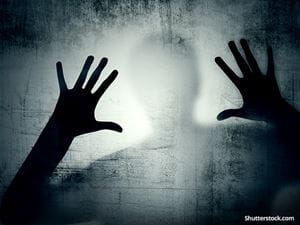
Gus Van Sant’s film, “The Sea of Trees,” begins with a man from whom life has fled. Expertly played by Matthew McConaughey, Arthur Brennan makes his way through an airport, his face unshaven, gaunt, and vacant. When offered food on his flight, he quietly declines. There’s no point in sustenance. There’s no point in pleasantries or smalltalk or all the other myriad considerations of the living.
He’s leaving the U.S. in a journey to reach Japan’s Aokigahara, a 35-square-kilometer forest that resides at the base of Mount Fuji.
This forest is one of the top suicide sites in the world.
McConaughey’s portrayal of a suicidal man is, at times, unnervingly convincing. The audience can almost feel a palpable aura that emanates from him, more true-to-life because it is not one of gloom, but of utter vacancy. There’s nothing left. He has, long ago, cried his last tears. He’s long past rage. There is simply nothing left. He’s done.
It’s a state that an unexpectedly high number of us reach. According to the American Foundation for Suicide Prevention, suicide is the 10th leading cause of death for Americans, with 42,773 of us taking our own lives each year. And for every 1 suicide, there are 25 attempts. If this were a disease, we would label it epidemic.
Brennan reaches this point through years of failure, both in his relationship and in his profession, all of which comes to a head after a tragic event. He quickly realizes that, because of the walls they both put up, he never truly got to know her, never got to know things like her favorite color of what season she might have loved.
Before her death, she asks him to promise that he won’t let himself die in a hospital, a place she loathes, and that he will deliberately choose where he passes away. When he asks how he’ll know when that time comes, she says simply, “You’ll know”. He promises. And now, alone, empty of life and filled with guilt, he flies to Aokigahara to end his life, thinking to make good on that promise.
People don’t travel the bumpy road to self-harm without displaying at least some subtle signs along the way—they needn’t be as obvious as Brennan’s far-away eyes. That’s why it’s so important to support those around us, and to be aware of what suicide looks like before it happens.
One of the most common warning signs lies in what the suicidal person says. Take note if they begin to talk about themselves as a burden on others, or if they speak of undergoing unbearable emotional pain, or having no reason to live, and, of course, if they speak of suicide directly.
Their behavior can contain many signs, as well. Look out for increased use of recreational drugs and signs that they are planning suicide, such as researching methods and tools. They may act recklessly or withdraw from activities, isolating themselves. They may also give away what they own.
Finally, the mood of someone who is suicidal is often very erratic, including depression, rage, irritability, and anxiety.
If someone in your life begins to display any of these symptoms, start asking questions. Find out what’s on their mind. Offering them an opportunity to talk about what’s hurting can reduce the chance of them acting on their suicidal feelings.
Brennan, in “The Sea of Trees,” isolates himself in the most complete way—he travels out of the country and walks into a darkened forest at the foot of a mountain in Japan. But intervention finds him, nonetheless, in the form of Takumi Nakamura, a fellow suicidal whom he meets, by chance, in the forest, and the film shows how much power the words of even one individual can have upon the suicidal soul.
Nakamura is lost, having failed to kill himself, and is seeking the way home out of the forest. Before long, the two realize that they are hopelessly lost, and go through various hardships as they try to find their way out, eventually ending up settling down and making camp.
The combination of newly given purpose—getting Nakamura out of the forest alive—and the simple opportunity to talk about his pain breathes life back into Brennan in a great example of how dialogue can help someone to think through their pain, to reconsider what it would really mean to end their life.
In the end, Brennan gains a new understanding of the promise that his wife asked of him—he no longer understands her words to mean that he should kill himself before he grows old or sick or feeble enough for a hospital bed, but that he must choose to live until his time really comes. And his time, as he realizes, has not come. Whether he and Nakamura make it out of Aokigahara alive or not, he chooses to live, and you can see the light slowly coming back into McConaughey’s eyes as his character realizes this.
Be there for others. Companionship is one of the most effective preventers of suicide. Connect, speak, and listen to the afflicted. Express concern and understanding. If the time comes and the situation calls for it, be frank—ask them what they’re planning. It’s quite likely that talking about their plan will bring tremendous relief. Don’t leave it up to chance—not everyone will have a Nakamura to run into.
The somber colors and dark striations of shadow which permeate Aokigahara, also known as “The Sea of Trees,” are a fitting representation of the mind and soul of the suicidal. The helplessness, the emptiness, the grief and guilt that wrack us can feel like an impenetrable forest, one which we have wandered into by chance, by force, or by bad decision, but one that, nonetheless, will not let us go. There are many paths in, and few paths out.
Be someone’s path. If you see a wanderer in the forest, take their hand, and give them a way out. They may not always come, but at least you’ll have shown them what the sunlight looks like for a moment. And once they see, they may just decide to run toward it.

